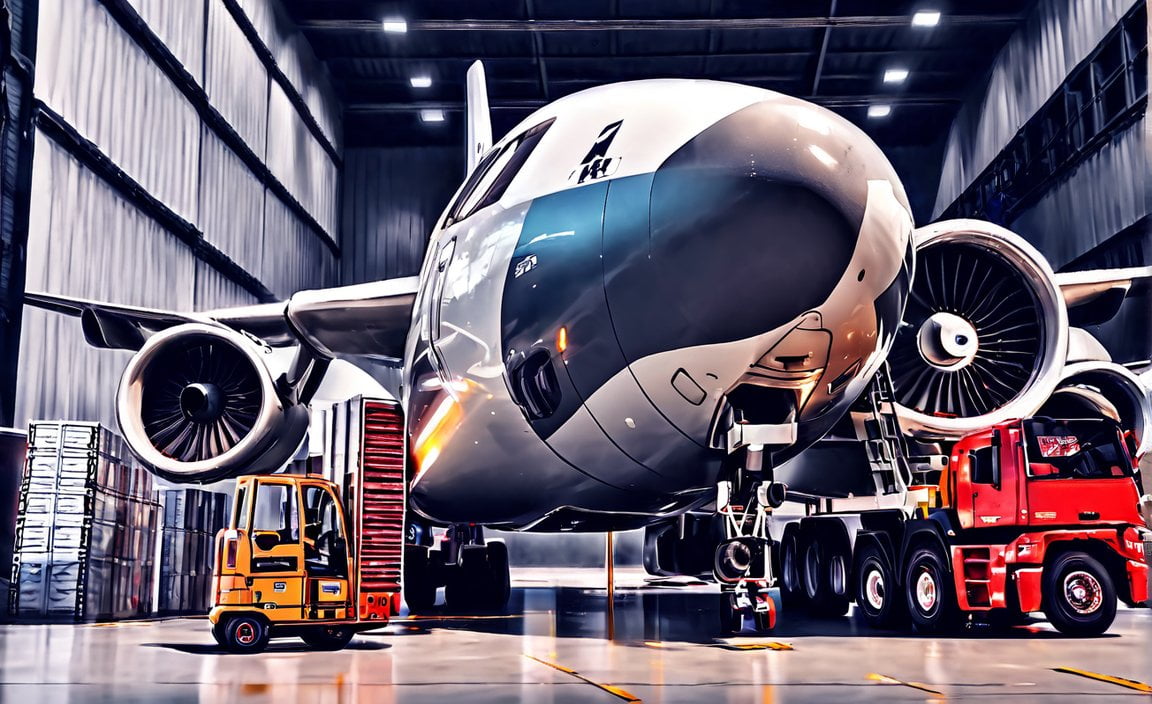Air freight offers efficient transportation solutions for businesses in need of versatile and reliable shipping options. With its ability to keep cargo secure, reduce packaging and storage requirements, and ensure swift delivery, air freight has become an indispensable part of the global logistics industry. In this article, we will explore the pros and cons of air freight and provide valuable insights for businesses seeking efficient transportation solutions. Whether you are a small company looking to expand your market reach or a multinational corporation in need of efficient supply chain management, understanding the advantages and drawbacks of air freight is vital for making informed decisions.
Key Takeaways:
- Air freight offers high speed, making it suitable for delivering goods over long distances in a short period of time.
- It is the ideal mode of transport for perishable goods with a limited shelf life.
- Air freight reduces transit time, inventory costs, and security risks for goods shipped across long distances.
- However, air freight has disadvantages such as higher cost, lower capacity, more fuel consumption, and stricter regulations.
- The cost of air freight can be up to 20 times higher than other modes of transport, making it the most expensive option.
- Air freight has a higher environmental impact compared to sea freight due to higher carbon emissions, noise pollution, and waste generation.
- Air transport offers fast service, convenience, and reliable services.
- Air transport allows goods to be sent to almost anywhere, including regions that are not easily accessible.
Advantages and Disadvantages of Air Freight


In the world of logistics, there are various transportation options available, each with its own set of advantages and disadvantages. When it comes to shipping goods internationally, air freight is one popular choice that offers unique benefits as well as drawbacks. Let’s delve into the pros and cons of air freight to gain a comprehensive understanding of this shipping method.
Advantages of Air Freight
Speed and Efficiency: One of the most notable advantages of air freight is its speed. Air transport services offer high-speed delivery, making it suitable for transporting goods quickly over long distances. This swift mode of transportation ensures that shipments reach their destinations in a short period of time, which can be crucial for time-sensitive goods or urgent deliveries.
Suitability for Perishable Goods: Air freight is ideal for perishable goods with a limited shelf life. The fast transit time minimizes the risk of spoilage, ensuring that perishable items, such as fresh produce or medical supplies, reach their destinations promptly and in optimal condition. This makes air freight a preferred choice for industries that rely on time-sensitive deliveries.
Global Access: One of the major advantages of air freight is its ability to reach almost anywhere in the world. Airports are well-connected and have extensive flight networks, allowing goods to be sent even to remote regions that may not be easily accessible by other modes of transport. This global access ensures that businesses can reach customers and suppliers in various locations efficiently.
Reduced Inventory Costs: Air freight’s speed and efficiency also contribute to reducing inventory costs. With faster transit times, businesses can optimize their supply chain management and keep inventory levels low. This minimizes the need for large warehousing facilities and allows for just-in-time delivery, saving costs associated with inventory holding and management.
Enhanced Security: Air freight offers a higher level of security compared to other modes of transport. Airports are equipped with stringent security measures and advanced screening technologies, ensuring the safety of shipments. Additionally, the limited handling involved in air freight reduces the risk of theft and damage during transit.
Disadvantages of Air Freight
Higher Cost: One of the significant drawbacks of air freight is its higher cost compared to other modes of transport. Air transport services involve higher operational expenses, including fuel costs, handling charges, and airport fees. The cost of air freight can be up to 20 times higher than alternatives like sea freight, making it the most expensive option for shipping goods.
Lower Capacity: Another disadvantage of air freight is its lower capacity in terms of volume and weight. Airplanes have limited cargo space, which restricts the amount of goods that can be transported in a single shipment. This limitation makes air freight less suitable for bulky or oversized items that may require larger cargo holds.
Fuel Consumption and Environmental Impact: Air freight has a higher environmental impact compared to sea or road transport. The aviation industry is responsible for significant carbon emissions, contributing to climate change. In addition to carbon emissions, air transport also generates noise pollution and waste, further impacting the environment.
Stricter Regulations and Customs Processes: Air freight involves navigating through strict regulations and customs processes. Each country has its own customs procedures and documentation requirements, which can be time-consuming and complex. Failure to comply with these regulations can result in delays or even shipment rejections, adding to the challenges of air freight.
While air freight offers numerous advantages, it is essential to consider the associated disadvantages and make informed decisions based on specific shipping requirements. Factors such as the nature of the goods, urgency of delivery, budget considerations, and environmental concerns should all be taken into account when choosing the most suitable mode of transportation.
Remember, air freight may excel in certain scenarios, such as time-sensitive or perishable goods, but it may not be the best option for every shipment. By carefully evaluating the advantages and disadvantages of air freight, businesses can identify when it aligns with their needs and find efficient transportation solutions that optimize their supply chain operations.
To explore the advantages and disadvantages of air traffic control systems, click here for an in-depth analysis.
Discover the pros and cons of air transport by clicking here. You’ll gain valuable insights into the strengths and weaknesses of this mode of transportation.
Air freight reduces packaging and storage
As businesses navigate the complexities of global trade, finding efficient transportation solutions is essential. One option that stands out is air freight, which offers significant advantages and disadvantages. In this article, we will delve into how air freight reduces packaging and storage requirements, allowing businesses to streamline their logistics operations.
The Benefits of Air Freight
Speed and Efficiency
Air freight is renowned for its fast and reliable service. It is the ideal choice when time is of the essence, allowing businesses to meet tight deadlines and satisfy customer demands. With air freight, goods can be transported across long distances in a matter of hours or days, significantly reducing transit time compared to other modes of transportation.
Reduction in Packaging and Storage
One key advantage of air freight is its ability to reduce packaging and storage needs. Unlike sea freight, which often requires extensive packaging to withstand longer transit times and potential environmental conditions, air freight offers a more streamlined process. The shorter transit time and controlled environment of air transportation minimize the need for bulky and excessive packaging, ultimately reducing costs and optimizing storage space.
Flexibility and Responsiveness
Another benefit of air freight is its flexibility and responsiveness to market changes. In today’s fast-paced business environment, where market demands can shift rapidly, the ability to quickly transport goods becomes crucial. Air freight allows businesses to adapt to changing customer preferences, seasonal demands, or unforeseen supply chain disruptions. It offers agility, enabling businesses to respond promptly to market dynamics.
Drawbacks of Air Freight
Higher Costs
While air freight provides speed and convenience, it comes with higher costs compared to other shipping options such as sea freight. The cost of air transportation can be up to 20 times higher than other modes, making it the most expensive choice for businesses. This premium cost is mainly due to factors like fuel consumption, higher handling charges, and limited cargo capacity on airplanes.
Environmental Impact
Another drawback of air freight is its higher environmental impact when compared to sea freight. Air transportation contributes to carbon emissions, noise pollution, and waste generation. The fuel-intensive nature of air freight increases its carbon footprint, making it less environmentally friendly compared to sea freight. Businesses must consider these environmental factors when evaluating their logistics strategies and carbon footprint goals.
Making an Informed Decision
When considering air freight as a shipping option, businesses must analyze the advantages and disadvantages to make an informed decision. While air freight reduces packaging and storage requirements, it’s crucial to weigh the associated costs and environmental impact. Businesses that ship high-value or time-sensitive goods can benefit from the speed and control offered by air transportation. However, for low-value, high-volume, or non-urgent goods, sea freight may be a more cost-effective and environmentally friendly option.
In conclusion, air freight provides numerous benefits, including reduced packaging and storage needs. Its speed, efficiency, and flexibility make it an attractive choice for certain types of cargo. However, businesses must carefully consider the higher costs and environmental impact associated with air freight. By evaluating their specific needs and considering the pros and cons, businesses can determine if air freight is the right fit for their transportation requirements.
Key Takeaways:
- Air freight offers speed, efficiency, and flexibility, making it ideal for time-sensitive shipments.
- One key advantage of air freight is its ability to reduce packaging and storage requirements.
- While air freight reduces packaging and storage, it comes with higher costs compared to other shipping options.
- Air freight has a higher environmental impact due to carbon emissions, noise pollution, and waste generation.
- Businesses should consider their specific needs and weigh the pros and cons before choosing air freight.
Sources:
1. Advantages & Disadvantages of Air Freight Transportation Services
2. Top 6 Advantages And Disadvantages Of Air Transport – Navata
FAQ
Q1: Is air freight a versatile and reliable shipping option?
A1: Yes, air freight is considered versatile and reliable due to its high speed and ability to deliver goods over long distances within a short period of time. It offers fast service, convenience, and reliable services, making it a preferred choice for many businesses.
Q2: How does air freight help keep cargo secure?
A2: Air freight provides enhanced security measures compared to other modes of transportation. It offers more control over cargo, reducing the risk of theft and damage. Additionally, the strict regulations and thorough customs inspections in air freight contribute to maintaining the security of goods in transit.
Q3: Does air freight reduce packaging and storage requirements?
A3: Yes, air freight can help reduce packaging and storage requirements. Due to its fast transit time, businesses can ship goods promptly, reducing the need for excessive packaging to protect fragile items during long journeys. Moreover, the reduced transit time allows for less inventory to be stored, optimizing storage space.
Q4: What are the advantages of air freight in terms of efficiency?
A4: Air freight offers several advantages in terms of efficiency. It reduces transit time, allowing businesses to have shorter overall lead times. This helps in meeting urgent delivery requirements and responding quickly to market changes. Additionally, air freight minimizes inventory costs by reducing the time goods spend in storage before reaching their destination.
Q5: Is air freight the most cost-effective shipping option?
A5: Air freight, although efficient, is generally the most expensive shipping option compared to other modes of transport. The cost of air freight can be up to 20 times higher than other modes, such as sea freight. Therefore, businesses need to carefully consider the value of the goods being shipped and the urgency of delivery when determining the cost-effectiveness of air freight.
- Senior at What Age: Benefits & Eligibility Guide - March 29, 2025
- Unlocking Senior Benefits: How Old is a Senior? Your Complete Guide - March 29, 2025
- Master Russian Politeness:A Guide to Saying Please - March 29, 2025
















